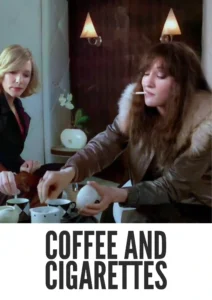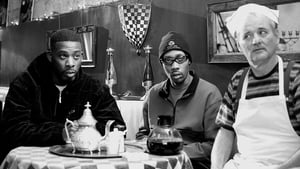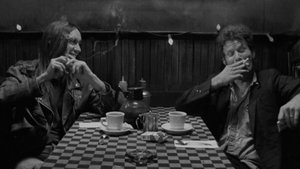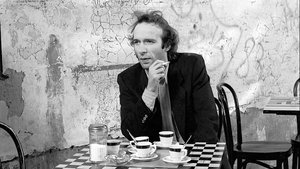Video Sources 0 Views

Synopsis

Indulge in the quirky and captivating world of Coffee and Cigarettes, Jim Jarmusch’s 2004 black-and-white anthology film, now beautifully colorized to add a fresh perspective to its unique charm. Featuring a star-studded cast including Bill Murray, Cate Blanchett, and Roberto Benigni, this film weaves together a series of short vignettes centered around the simple act of sharing coffee and cigarettes. Perfect for fans of independent cinema and those who appreciate the beauty in everyday moments, this HD download offers a thought-provoking and entertaining experience unlike any other.
Coffee and Cigarettes is structured as a series of eleven independent short films, each featuring different characters engaging in conversations over coffee and cigarettes. These conversations touch on a variety of subjects, from the mundane to the profound, exploring themes of relationships, creativity, and the human condition.
The vignettes feature a diverse range of personalities, including musicians Iggy Pop and Tom Waits, actors Cate Blanchett and Bill Murray, and comedians Steven Wright and Roberto Benigni. Each segment offers a unique perspective on the simple act of sharing coffee and cigarettes, highlighting the humor, awkwardness, and genuine connection that can arise in these everyday moments.
The film’s strength lies in its understated style and its ability to find beauty in the ordinary. Jarmusch’s minimalist approach allows the characters and their conversations to take center stage, creating a captivating and thought-provoking cinematic experience.
The film features an impressive ensemble cast, each bringing their unique talents to their respective roles:
-
Roberto Benigni as Roberto
-
Steven Wright as Steven
-
Joie Lee as Good Twin
-
Cinqué Lee as Evil Twin
-
Steve Buscemi as Danny
-
Iggy Pop as Iggy
-
Tom Waits as Tom
-
Joe Rigano as Joe
-
Vinny Vella as Vinny
-
Renée French as Renée
-
Alex Descas as Alex
-
Isaach De Bankolé as Isaach
-
Cate Blanchett as Cate/Shelly
-
Jack White as Jack
-
Meg White as Meg
-
Alfred Molina as Alfred
-
Steve Coogan as Steve
-
Bill Murray as Bill Murray
Coffee and Cigarettes defies easy categorization but is best described as a comedy-drama anthology film. It blends elements of humor, satire, and poignant observation to create a unique and engaging cinematic experience.
Released in 2003, Coffee and Cigarettes reflects the spirit of independent cinema in the early 2000s. During this period, filmmakers were experimenting with new forms of storytelling and pushing the boundaries of traditional cinematic conventions. Jarmusch’s film stands as a prime example of this trend, showcasing his minimalist style and his focus on character-driven narratives.
This colorized version of Coffee and Cigarettes has been meticulously restored using modern digital techniques, enhancing the visual appeal while preserving the film’s original charm and atmosphere. The colorization process involved carefully analyzing the grayscale tones of the original black and white footage and assigning appropriate colors to each scene. While the specific software used remains proprietary, the techniques employed included advanced algorithms for color palette selection and image enhancement. This painstaking process brings new life to the characters and settings, making the story even more engaging for modern audiences. While some may debate the merits of colorizing classic films, it introduces these films to a broader audience, ensuring their legacy for future generations.
-
: Jim Jarmusch
-
: Jim Jarmusch
-
: Frederick Elmes
-
: Jay Rabinowitz
-
: Smokescreen Inc.
-
: United Artists
-
: 96 minutes
-
: MP4
-
: HD (1080p)
-
: Compatible with most devices, including smartphones, tablets, computers, and smart TVs.
Coffee and Cigarettes (2003) has been praised for its unique concept, its stellar cast, and its understated style. It remains a beloved cult classic, celebrated for its quirky charm and its ability to find beauty in the ordinary.
-
: What is Coffee and Cigarettes about?
-
A: Coffee and Cigarettes is an anthology film that consists of eleven short films, each featuring different characters engaging in conversations over coffee and cigarettes.
-
-
: Is Coffee and Cigarettes (2004) a well-known film?
-
A: While not a mainstream blockbuster, Coffee and Cigarettes has gained a strong cult following among fans of independent cinema.
-
-
: Is this version of Coffee and Cigarettes colorized?
-
A: Yes, this version has been professionally colorized to enhance the viewing experience.
-
-
: What makes Coffee and Cigarettes interesting for film fans?
-
A: Coffee and Cigarettes offers a unique and thought-provoking cinematic experience, showcasing the talents of a stellar cast and the vision of director Jim Jarmusch.
-
-
: What is the download format?
-
A: The download format is MP4, which is compatible with most devices.
-
-
: What resolution is the download?
-
A: The resolution is HD (1080p), providing a high-quality viewing experience.
-
Watch Coffee and Cigarettes Today!













